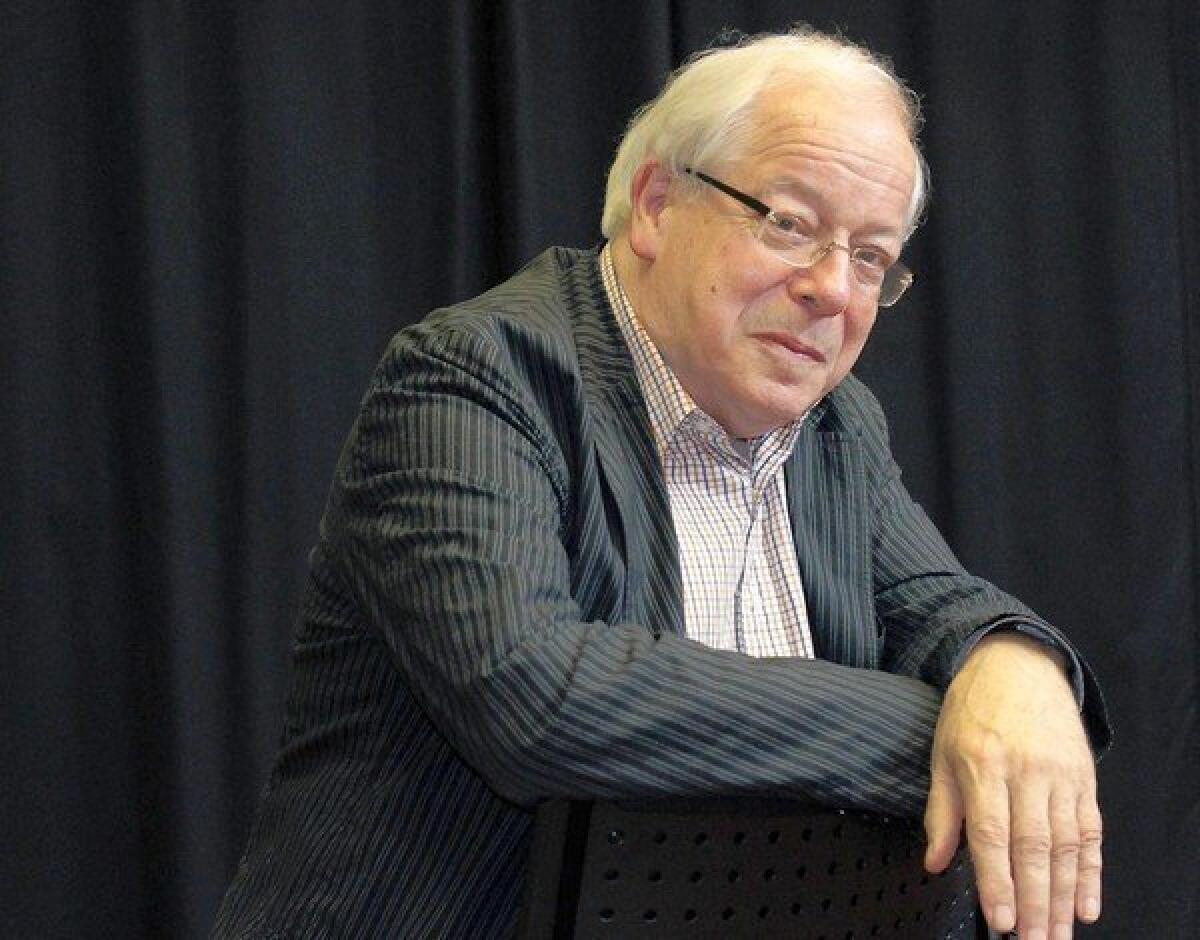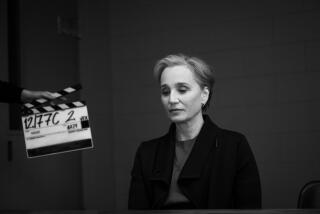David Thomson takes a wide view of movies in ‘The Big Screen’

Even the most ardent traditionalists have to acknowledge that vast, sweeping changes are at work within the realm of film culture. The very practice of shooting on actual physical film, not to mention running that film through a projector for viewing, has become in a way a purposeful act of rebellion. And if motion pictures are no longer shot on film, do we still call them films? Is the very name, let alone nature, of the movies now in doubt?
In his latest book, “The Big Screen: The Story of the Movies” (Farrar, Straus & Giroux: 608 pp., $35), author David Thomson presents an ambitiously sprawling overview of the history of motion pictures, told through a perspective at once passionate and removed.
The book has the feel of being on-call for a former lover — even if expecting another crushing disappointment, Thomson keeps coming back for more. He gives considerable attention to favored filmmakers such as Orson Welles, Howard Hawks, Jean Renoir and Jacques Rivette without losing sight of how it all fits together, constantly drawing connections back to, well, the big picture.
“This is maybe the most important book I’ve written, I think, because it’s not simply a book within the world of movie, it’s a book about the history of movie in terms of its place in the history of the last 150 years,” Thomson said on a recent afternoon, looking dapper if slightly rumpled as he sat poolside at a Beverly Hills hotel.
“I think that audiences who love movies need to recognize that things have happened that are complicated and tricky and that we have to take some responsibility for,” he continued.
“The Big Screen” returns to the notion of how we watch — from movie theaters to television to computers and handheld devices — Thomson using the dual meaning of the word “screen” as both something on which to project images and something to shield perception and meaning.
Thomson notes in the book’s prologue that he was initially taken by watching people on public transportation, transfixed within their individual worlds on tablets and devices. As he writes, “The movies always seemed to be about looking and the quality of things seen — as mood, narrative, or even beauty — and about the possibility of seeing inner meanings. So this book will exult over great films (and urge you to see them), and it will worry, too, over the ways in which the multiplicity of screens are not just metaphors for our isolation and feelings of futility in dealing with the world but a fuel for that helplessness.”
All of which led him to consider not only cinema’s past but also how the rapid changes in production, distribution and exhibition were affecting its future.
“I don’t think it’s possible to have an answer, but I think it’s impossible not to think about the question,” he said. “If you’re aware, as you have to be, of the changes that are occurring faster and faster, you have to ask where is it going.”
London born, Thomson has retained his British accent even though he has long lived in San Francisco. At 71, he is a leading authority on cinema and yet still somehow outside the bustle and bump of the industry. (A chapter in “The Big Screen,” titled “Brave New Northern California World,” traces the development of the region’s titans George Lucas and Francis Ford Coppola.)
He has written a number of novels that take place within the orbit of Hollywood, but it is for his nonfiction work that he is best known. Thomson’s venerable “Biographical Dictionary of Film” topped a poll of the best books ever written about film conducted a few years ago by the British film journal Sight & Sound.
Part of the enduring appeal of his “Dictionary” is his fearlessness in interjecting criticism into the objective stance of history, establishing a framework by which to make declarations such as calling Cary Grant “the best and most important actor in the history of cinema.” Even if you vehemently disagree with one of Thomson’s entries on someone, his position helps you sharpen your own.
Throughout “The Big Screen,” Thomson attempts to connect the past to the present, in hopes of capturing some sense of the fundamental changes shaking the foundations of film culture, while acknowledging the difficulty of writing something definitive when so much is in flux.
When he began working around 1970 on “The Biographical Dictionary of Film,” Thomson said, “I kidded myself that it was possible to write a book that sort of covered everything. You can no longer hold that notion in your head, it’s absolutely absurd.”
Yet as cinema history grows longer and longer, causing many writers to prefer the niche specifics of an individual film or filmmaker, Thomson said, “I do think it’s important to try to maintain an overview, to say where we have been, where we come from, where are we going.”
No one wants to be the next Bosley Crowther, the veteran critic who saw his legacy essentially destroyed when he opposed the arrival of films such as “Bonnie and Clyde,” stepping in front of the train of history instead of getting on board. So Thomson avoids death-knell pessimism in “The Big Screen.” In fact there is something distinctly hopeful in Thomson’s gazing toward the future of movies, the cinema or whatever you want to call the industry of image-making, which also happens to be a cultural repository of hopes and dreams, fears and desires.
“For me this book was definitely a way of shaking off the worst risks of the sentimental attitude that things aren’t what they used to be,” Thomson said. “Now I really believe, no, they aren’t what they used to be but, what do you expect? And they aren’t what they are going to be either.”
More to Read
Sign up for our Book Club newsletter
Get the latest news, events and more from the Los Angeles Times Book Club, and help us get L.A. reading and talking.
You may occasionally receive promotional content from the Los Angeles Times.








